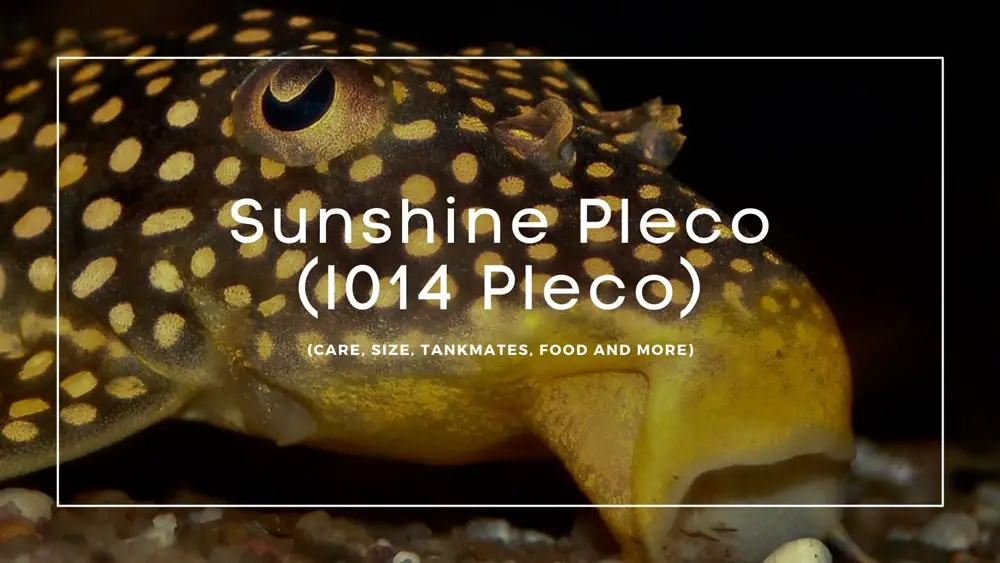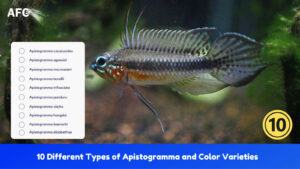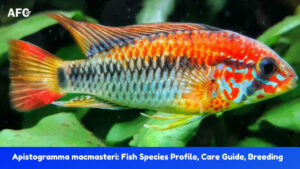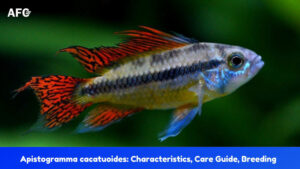If you’re looking to add a beautiful and easy-to-maintain fish for your big aquarium, the LO14 pleco can be a great option to go for even though it’s a highly sought-after species due to its size and stunning coloration.
But there’s much more to them than just their appearance; these little guys can be relatively peaceful (in the right habitat) and don’t have complicated care requirements. That’s what we’ll be talking about in this guide.
So, by the end of it, you’ll surely come to know all about how you can grow and care for a sunshine pleco in a fish tank.
Let’s get going, then!
Species Profile
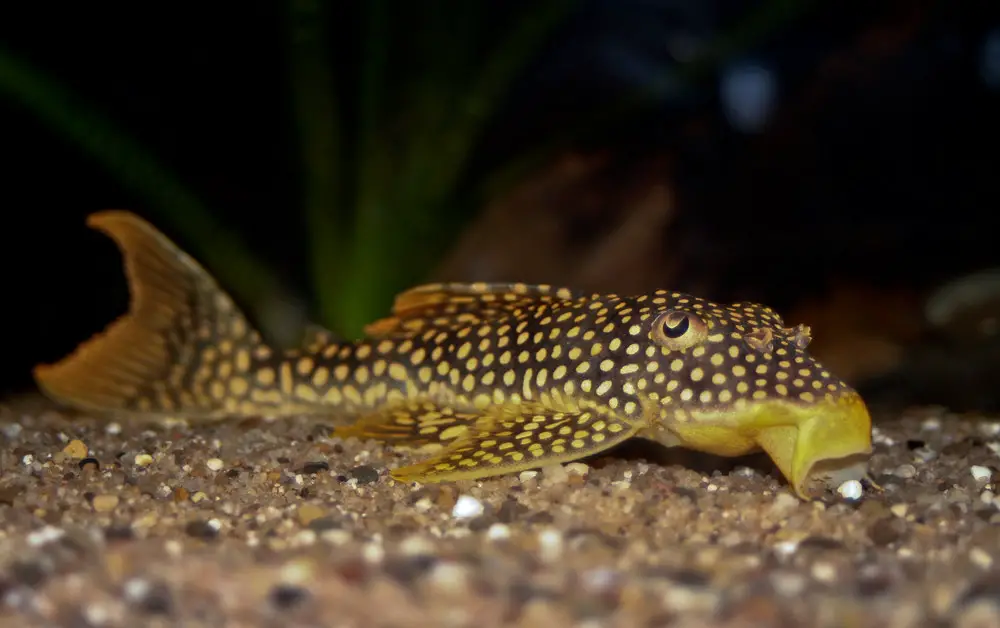
Having the scientific name Scobinancistrus aureatus, the Sunshine Pleco belongs to the Loricariidae, commonly known as the largest family of catfish.
The majority of this species can be found in the warm waters of Brazil’s Rio Xingu in South America. These fishes are among the most popular plecos species for larger aquariums due to their intriguing coloration and large size.
Such fishes are generally bred in a fish tank or aquarium when they are small and young.
| Scientific Name | Scobinancistrus Aureatus |
| Common Names | Sunshine Plecostomus, Golden Pleco, L014 |
| Origin | South America |
| Maximum Size | 12″ |
| Temperature | 77-84.2°F |
| pH | 5.8 – 7.2 |
| Aquarium Size | 120 gallons + |
| Diet | Omnivorous. Requires meaty foods and vegetable matter |
| Compatibility | Peaceful with plenty of space and hiding places |
Lifespan
If fed properly and kept in the ideal aquatic environment, a sunshine pleco can live for 10 to 15 years. That’s a bit longer than most tropical fish, so be prepared for years of care.
There’s no guarantee with any species when it comes to lifespan. The proper living conditions, a good diet, and regular tank maintenance will directly affect your sunshine pleco’s lifespan.
Sunshine Pleco Size
Sunshine plecos measure about 3 to 3.5 inches long when they’re a few days old, but their max size can be about 12 inches(30cm). Note that both the measurements include the length of their tail, which is quite large.
When you first buy a sunshine pleco, it’ll likely be 2-3 inches in length. But don’t let that small size fool you! As we’ve said, this species can grow to a size of up to 12 inches.
Appearance
In their sub-adult stage, sunshine plecos are identified by their striking golden brown color. And though this coloration diminishes as they grow, the adult fishes can still be distinguished easily by the golden dorsal fin.
Sexing
The male fish usually grows larger than its female counterpart and develops a “bristled” look that can shine when light reflects off its body. Plus, in mature males, the edge of the leading pectoral fin ray becomes a bit spiny.
Another noteworthy difference between males and females is that the head looks blockier in the former and triangular in the latter when viewed from above. Note the body of females is wider across the midriff region.
Sunshine Pleco Care
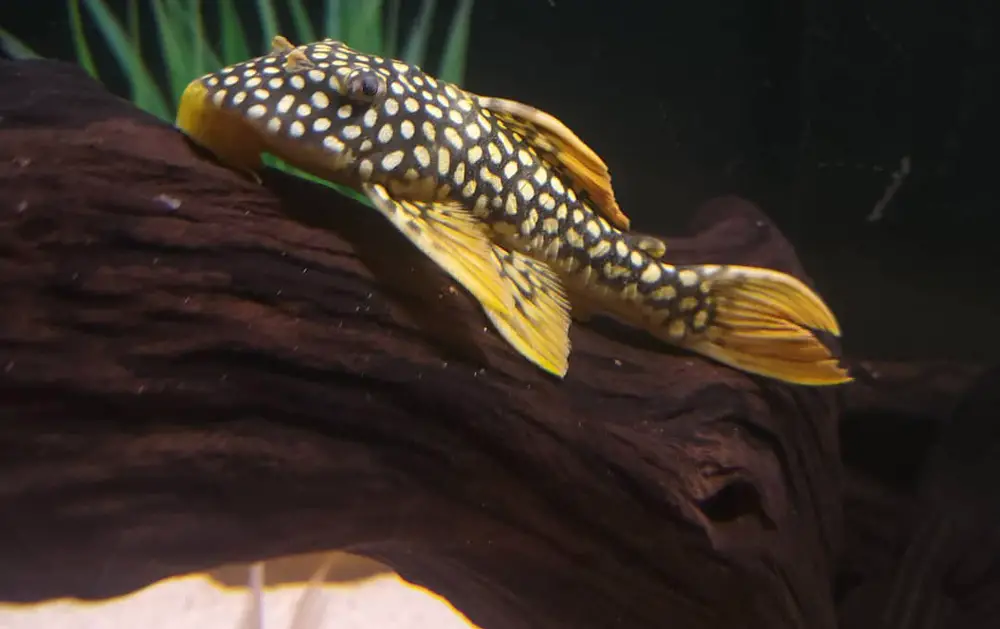
To provide the ideal care to your sunshine pleco, you’ll have to ensure the following parts of its habitat are maintained the right way.
Tank Size
As mentioned earlier, young and sub-adult sunshine plecos can grow to about 3.5 inches long. Such fishes can stay comfortably in tanks of at least 48×18 inches and have a capacity of at least 20 gallons. However, for housing a fully grown sunshine pleco, you’ll require a tank of at least 120 gallons.
Water Conditions
In order for your sunshine pleco over there to thrive best, you need to replicate their natural environmental conditions in the wild, including water conditions and decorations.
Plus, you must keep the water well-filtered, for which the most effective method is to use canister filters of good quality.
Keeping everything stable is easy once you get the hang of it, and it will ensure that your fish stay healthy.
Here are some basic parameters:
Water temperature: 77-84.2°F
pH level: 5.8 – 7.2
KH: 0 – 30 dKH
Decor & Substrate
Speaking about the decor for your sunshine pleco, it would be great if you could provide dark hiding places because the sunshine pleco is primarily nocturnal, and they spend most of the daytime hiding.
A suitable environment should include soft sand or fine-grained gravel substrate, various pieces of rounded stones, and subdued lighting.
Another important addition to the fish tank is driftwood. Although the sunshine pleco is not a wood eater like some plecos, it may benefit from it as a source of fiber.
The live plant isn’t very abundant in the natural habitat, and sunshine plecos normally leave plants alone, so it is a personal preference. However, some hardy vegetation will make your aquarium look more aesthetically pleasing, and they are good for water quality too!
Feeding
You should feed your sunshine pleco with frozen bloodworm and sinking pellets regularly, though they can also feed on any prepared food that reaches the bottom. You can even try feeding them garden snails.
Interestingly, fully grown adults can tackle mussels and king prawns with relish.
Behavior & Temperament
As for the daily behavior of sunshine plecos, most of them can be seen hiding among the caves and plants during the day and turn more active during nighttime.
Now, what we found quite intriguing was that these fishes are generally semi-aggressive towards members of their own species. But apart from that, they have a friendly temperament. On a side note, remember that they are best kept in a tank on their own owing to the size constraint.
Breeding
In recent years, loricariid catfish species have been bred successfully in the aquarium. Rajanta Sinardja Rahardja, an excerpt from Amazonas, had professionally bred the beautiful sunshine pleco in their hatchery in 2012.
Final Thoughts
So, what do you feel about adding a sunshine pleco to your fish tank? Though it requires regular care and maintenance, it can add variety to the tank and enhance its visual appeal.
But make sure you keep just one of these fishes per tank as that will save space for other fishes to move around.
If you have any other questions regarding sunshine plecos, feel free to reach out to us through the comments section below. Now it’s time for us to wrap up but see you soon with more informative guides.
Till then, take care!
